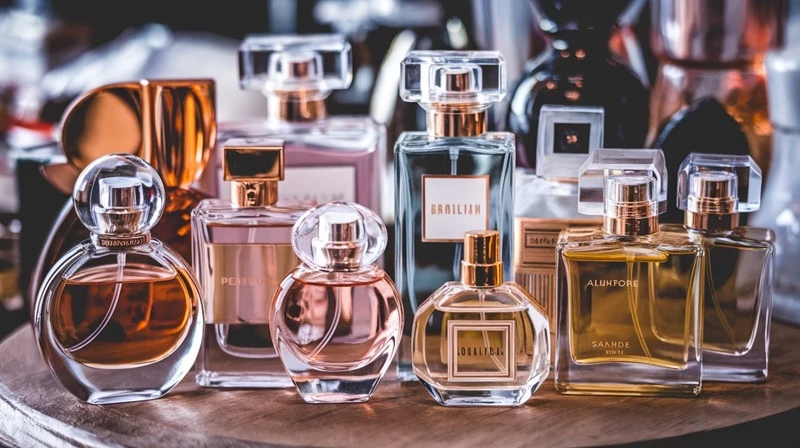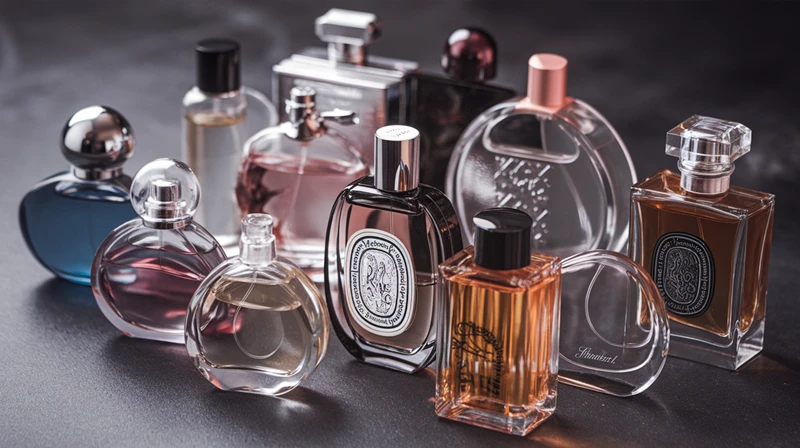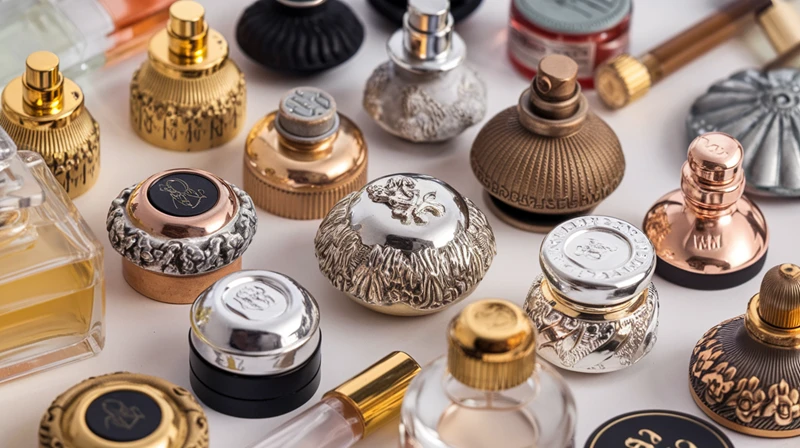How to Choose Essential Oil Bottles that Safeguard the Natural Essence of Essential Oils
Essential oils are highly concentrated plant extracts revered for their aromatic and therapeutic properties. As the popularity of alternative medicine and aromatherapy continues to surge, the demand for these potent oils has significantly increased.
However, the very nature of essential oils—their volatility and susceptibility to environmental factors—makes them challenging to preserve.
This article explores the pivotal role of proper storage solutions in maintaining the purity and efficacy of essential oils.
By understanding the various challenges associated with preserving these delicate substances over time, consumers and businesses alike can make informed decisions about selecting the right packaging that not only protects but also enhances the longevity of the oils.
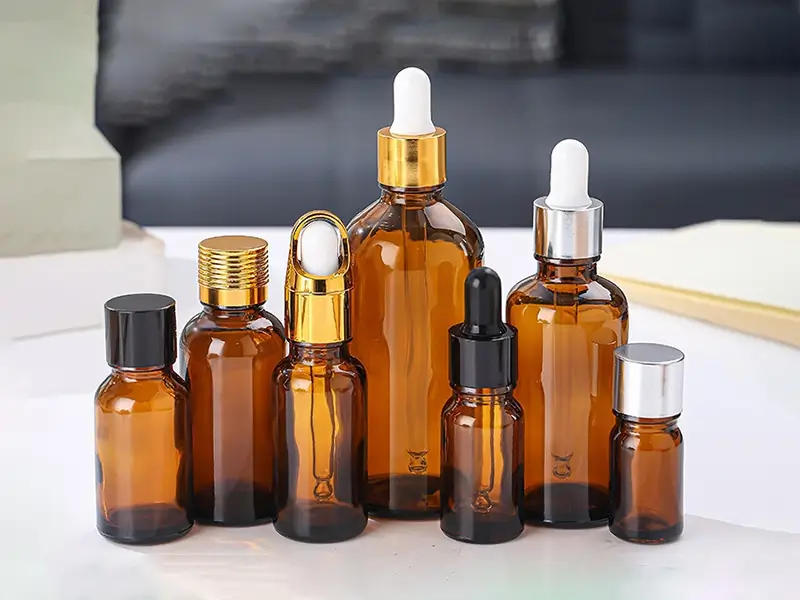
Essential Oils: Growing Market and Preservation Challenges
The essential oils in alternative medicine and aromatherapy are not just a fleeting trend; they represent a robust health and wellness industry segment.
As more individuals turn towards natural remedies, the demand for essential oils has significantly increased. However, this growing popularity brings a host of preservation challenges that can impact the quality and safety of the oils.
- Volatility and Spoilage:
Essential oils are naturally volatile, meaning they can evaporate and degrade when exposed to environmental factors such as air, light, or heat. This inherent volatility requires meticulous handling and storage solutions to maintain their integrity and therapeutic properties. Proper packaging and controlled environments are essential to mitigate these risks and ensure the oils remain potent and beneficial.
- Risks of Degradation:
Over time, essential oils can undergo chemical changes due to exposure to environmental conditions, leading to the degradation of both aroma and effectiveness. These alterations can transform the oils, making them less effective and potentially harmful if used topically or in aromatherapy.
- Consequences of Using Expired Oils:
Utilizing essential oils past their effectiveness date can lead to adverse effects, such as skin irritation or allergic reactions. Furthermore, the diminished aroma and reduced therapeutic efficacy of expired oils can significantly detract from the user’s experience, undermining the sought-after health benefits and potentially causing dissatisfaction.
Understanding these preservation challenges is crucial for consumers and producers alike, as it influences decisions regarding the production, packaging, and storage of essential oils, ensuring they deliver their maximum therapeutic value.
Key Factors in Selecting Essential Oil Bottles
When choosing containers for essential oils, it’s crucial to consider several key factors to ensure that the oils’ beneficial properties are preserved.
This involves a detailed evaluation of the materials used, the color of the bottles, and the type of closure, as each of these elements plays a significant role in maintaining the integrity and efficacy of the oils.
Material
- Glass: Glass is a top choice for essential oil storage due to its inert nature, meaning it does not react chemically with the oils. This material offers substantial protection against photodegradation and preserves the oils’ purity. However, glass’s fragility can be a drawback, requiring careful handling and packaging.
- Plastic: Plastic bottles are lightweight and less fragile, making them convenient for transport and handling. However, not all plastics are suitable for storing essential oils, as certain oils can react with plastic, leading to the degradation of both the oil and the bottle. It’s crucial to choose high-quality, oil-safe plastic to avoid these issues.
- Aluminum: Aluminum bottles provide a durable and lightweight alternative, with the added benefit of excellent UV protection. This makes them suitable for oils sensitive to light exposure, ensuring that the oils are shielded from harmful rays.
Color
- Amber or Cobalt Blue: These colored bottles are favored in the industry as they significantly reduce light penetration, thus protecting the oils from light-induced degradation. The darker the bottle, the slower the degradation process.
- Dark Violet: Some manufacturers opt for dark violet glass, which incorporates advanced technology to filter out harmful UV rays, offering superior protection against photodegradation.
Closure Type
- Airtight Caps: Using airtight caps is essential to prevent oxidation and leakage. These caps ensure that the oils are sealed off from air exposure, which is crucial for maintaining their quality and efficacy over time.
- Dropper Caps or Spray Bottles: These types of closures allow for precise dispensing of the oils, making their use more convenient and controlled. This is particularly beneficial in therapeutic settings, where dosage and application accuracy are important.
Selecting the right type of bottle is more than just a practical consideration; it’s a crucial aspect of product quality and consumer safety. Understanding and applying these key factors in bottle selection can significantly impact the stability, effectiveness, and shelf life of essential oils, ensuring they deliver their full therapeutic potential.
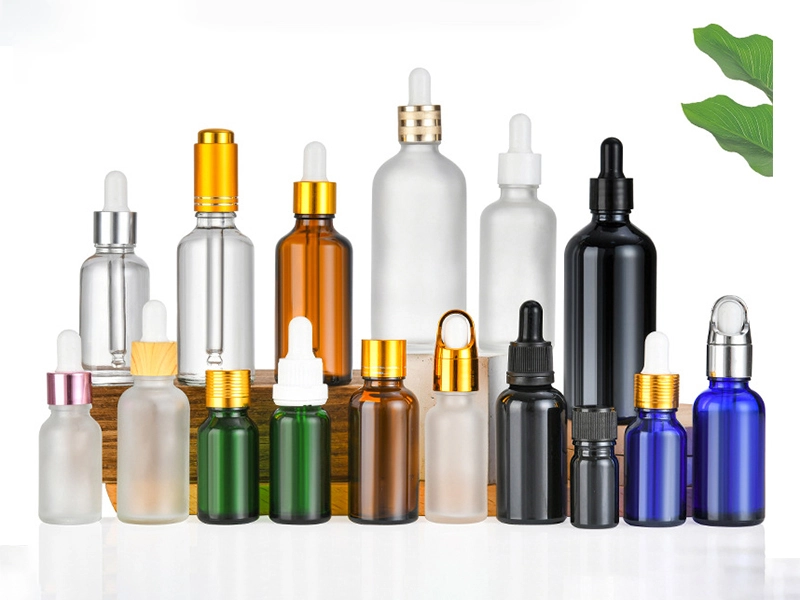
Customization for Branding
In a market flooded with generic products, distinctive essential oil packaging can make a significant impact on brand recognition and consumer preference. Here are key considerations for customizing essential oil bottles to align with branding and attract customers:
- Design Distinction: The design of the bottle can be a major differentiator. Unique bottle shapes or decorative features can capture the essence of the brand and appeal to specific consumer demographics.
- Material and Finish Options: Beyond functionality, the choice of materials and finishes plays a crucial role in branding. Options such as frosted glass, bamboo caps, or gradient glass bottles can elevate the product’s aesthetic and appeal to eco-conscious consumers.
- Labeling and Decoration: High-quality labels with attractive graphics and clear information can enhance brand visibility and trust. Techniques such as screen printing or embossing on the bottle itself can also add a touch of luxury and uniqueness.
- Environmental Considerations: Brands that emphasize sustainability can opt for recyclable or biodegradable packaging materials, aligning the packaging choices with their brand values and appealing to like-minded consumers.
Environmental Factors Affecting Essential Oil Shelf Life
The longevity and efficacy of essential oils are significantly influenced by environmental factors, making the selection of the right packaging and storage conditions critical for preserving their therapeutic benefits. Here’s a deeper look at how these factors impact essential oils:
Oxygen Exposure (Oxidation)
The presence of oxygen can have a profound impact on the stability and efficacy of essential oils. Oxygen can rapidly alter the chemical composition of these volatile compounds through a process known as oxidation.
This not only diminishes their therapeutic properties but also affects their aroma, making them less effective and potentially altering their intended effects. To combat this, it is crucial to use effective sealing methods. Airtight caps are essential as they minimize air exposure, thereby maintaining the integrity and potency of the oils.
This kind of packaging ensures that the essential oils are protected from the moment they are bottled until they reach the consumer, providing a longer shelf life and a more reliable therapeutic outcome.
Moisture (Water Contamination)
Moisture is a significant threat to the purity of essential oils. If bottles are not sealed properly, moisture can infiltrate, causing the oils to become cloudy and potentially contaminated. This not only impacts the visual quality of the oils but can also lead to a loss of purity, reducing their effectiveness and safety for therapeutic use.
Ensuring that caps are tightly sealed can prevent moisture from entering the bottle. Moreover, the use of high-quality, moisture-resistant materials for both the bottle and the cap can further safeguard the oils from water contamination, thereby maintaining the oil’s quality and extending its usability.
Heat (Temperature Sensitivity)
Essential oils are particularly sensitive to temperature fluctuations. Exposure to high temperatures can rapidly degrade the active compounds within these oils, accelerating their spoilage and reducing their therapeutic value.
To preserve the quality of essential oils, it is crucial to store them in a cool, stable environment. This includes avoiding areas that may be exposed to direct sunlight or near heat sources, such as windows or stoves.
By maintaining a consistently cool storage condition, the stability and efficacy of essential oils can be significantly prolonged, ensuring they remain effective for both personal and professional use.
Light (Photodegradation)
Light exposure, particularly ultraviolet and visible light, can be detrimental to essential oils. These rays can break down the chemical structures within the oils, leading to photodegradation. This not only alters their chemical properties but also diminishes their therapeutic effectiveness and aroma.
To protect essential oils from light-induced degradation, using tinted glass bottles such as those that are amber or cobalt blue is advisable. These colors effectively block or filter out harmful rays, thus preserving the integrity and efficacy of the oils.
This type of protective packaging is especially important for ensuring that essential oils maintain their beneficial qualities over time, making them safe and effective for therapeutic use.
Additional Factors to Consider like Packaging Material:
In addition to these primary factors, the overall quality of the packaging material also plays a vital role. Materials that can provide a barrier against these environmental threats are preferable.
For instance, high-quality glass not only prevents interactions with the oils but also offers superior protection against UV light and temperature variations.
Incorporating these considerations into your packaging strategy will significantly aid in maintaining the therapeutic properties and purity of essential oils, ensuring they deliver their full potential to the end-users.
Testing and Certification Standards
To ensure the highest standards of quality and safety, essential oil bottles must meet rigorous testing and certification requirements. Here’s what manufacturers and consumers should look for:
- GC/MS Testing: Gas Chromatography-Mass Spectrometry (GC/MS) testing is essential for verifying the purity and composition of essential oils. Transparent reporting of batch-specific GC/MS results can help consumers and businesses ensure that the products meet therapeutic grade standards.
- Certifications: Certifications such as ISO (International Organization for Standardization) or similar standards are indicators of a manufacturer’s commitment to quality and safety. These certifications ensure that the essential oil bottles are produced under strict guidelines and quality control measures.
- Compliance with Regulations: The bottles must comply with national and international regulatory standards concerning materials and closures used in essential oil packaging. This ensures safety during transportation, storage, and use.
- Leak Testing: Leak testing of bottles is crucial to prevent oil wastage and maintain the effectiveness of the oils. Airtight seals help in preserving the therapeutic properties by preventing oxidation.
Why Shine Packaging is an Ideal Supplier
When it comes to choosing a supplier for essential oil bottles, Shine Packaging stands out due to its commitment to quality, safety, and customer satisfaction.
Here’s why Shine Packaging is a trusted choice:
- Transparency and Labeling Practices: Shine Packaging is known for its clear and honest labeling practices, ensuring that all necessary information is accessible and understandable. This transparency helps customers make informed decisions about their packaging needs.
- Adherence to Safety Standards: By consistently meeting rigorous safety standards, Shine Packaging ensures that every bottle provided is suitable for preserving the integrity and efficacy of essential oils. Their products are tested to withstand various environmental factors that could compromise the quality of the oils.
- Wide Range of Options: Shine Packaging offers a diverse selection of bottle types, materials, and closures, tailored to meet the unique needs of different essential oils. Whether it’s glass, aluminum, or specially designed plastic, each option is designed to maximize protection and enhance shelf life.
- Wholesale Availability: For businesses looking to buy in bulk, Shine Packaging provides cost-effective solutions without compromising on quality. This is ideal for businesses aiming to manage costs while still offering premium packaging to their customers.
- Sustainability Commitment: Aligning with modern environmental concerns, Shine Packaging also offers eco-friendly packaging options, helping brands maintain their ecological commitments.
Conclusion
Choosing the right bottles for essential oils is crucial not only for preserving their natural essence and extending their shelf life but also for ensuring consumer safety and satisfaction.
By understanding the importance of proper storage, recognizing the environmental factors that affect essential oils, and considering key features in bottle selection, businesses can make informed decisions that enhance the quality and appeal of their products.
Shine Packaging provides reliability and quality in the essential oil market. With their commitment to safety, transparency, and innovation, they offer a range of packaging solutions that cater to the diverse needs of essential oil producers and consumers.
Investing in the right packaging from a trusted supplier like Shine Packaging can elevate a brand, ensuring that each bottle of essential oil delivered to consumers maintains its purity, potency, and promise.
For businesses looking to secure their position in the competitive market of essential oils, choosing Shine Packaging is not just a safe bet—it’s a smart strategy for long-term success.
Let's build your project!
Contact us for comprehensive information on perfume bottle production and pricing:
- Elegance and Durability
- Preservation of Fragrance
- Sustainability
- Tailored Design
- Quality Assurance
- Efficient Service
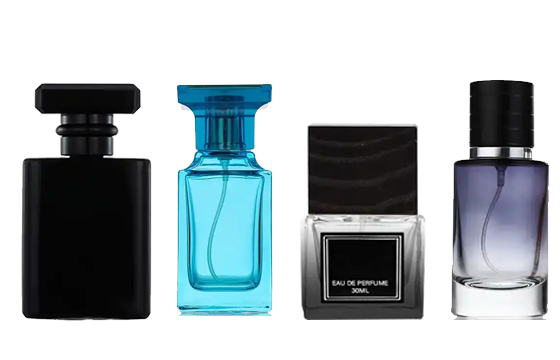

FREE SAMPLE







